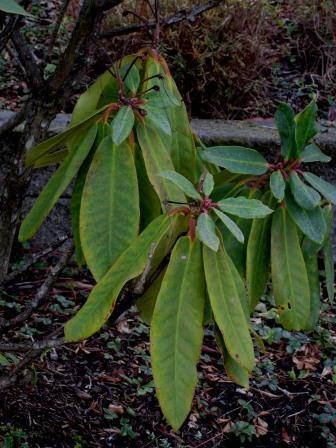This past weekend GP Jeff Gillman and I were in Midland, Michigan for two different conferences and had a chance to catch up over dinner (Boulevard burgers – best in Midland) and a couple of cold Bell’s stout ales. It was nice to visit with Jeff since we have so much in common but rarely get to see each other. As you might suspect, our conversation centered on negotiating the perils of the tenure and promotion process at research intensive universities, dealing with bumbling administrators, and, of course, our fellow Garden Professors. Quick Garden Professor trivia: Who’s the shortest Garden Professor? (Answer below).
Another item we discussed is how frantically worked up some people about following the various landscaping ‘rules’, especially for tree planting.
I have a program that I do on soil amendments. I present 6 or 7 examples from about 30 studies that I’ve collected from the literature that show that amending backfill when planting trees provides little, if any, value. Invariably, 2 or 3 audience members race up to podium after the Q & A, veins popping out of their foreheads.
“You have to add compost/peat/hydrogel/cow manure/take your pick when you plant!” they sputter.
I counter, “No you don’t. I just showed you a half dozen examples where it didn’t matter; if I had time I could’ve shown you two dozen more.”
The conversation usually turns one of two directions from there.
“Well, I saw a gardening expert on TV and they said you always have to add compost/peat/hydrogel/cow manure/take your pick when you plant.”
The other variation is: “Well, I always add compost/peat/hydrogel/cow manure/take your pick when I plant trees and shrubs and they do great.”
“Did you try any without the compost/peat/hydrogel/cow manure/take your pick? ”
“No, why would I? They always do great when I add compost/peat/hydrogel/cow manure/take your pick !”
As part of the soil amendment talk I present some data from a tree planting study which also included a comparison of width of the planting hole (1.2 times the width of root-ball, 2x root-ball width, and 3x root-ball width). After three years, width of planting hole had no effect on shoot or diameter growth. At this point in the talk I wait ten seconds before I move on to allow the results to sink in. By the time the next slide hits the screen half the audience is in a state psychologists refer to as ‘cognitive dissonance’.
People just can’t get over it. Another race to the podium after the talk, “But you have to dig the hole 3 times the width of the ball.”
“Can if you want to, but I wouldn’t say have to.”
“But, but…”
Clearly, there are things that shouldn’t be done when planting trees, like planting too deep. But a lot of things we “know” are based on what sounds right, on what feels right; not necessarily on science. Many practices have worked their way into extension bulletins, fact sheets, and our communal knowledge through sheer repetition. Often times, these are things that won’t hurt the tree (adding amendments or making a wider planting hole) but make the job harder than it has to be.
Point is, we need to take a deep breath, get a grip, and be careful with absolutes like ‘never’ and ‘always’. Working with trees is a lot like working for a university; it requires a high tolerance for ambiguity. Trees are living dynamic organisms that are able to respond and acclimate to their environment. I’ve stated many times that trees often grow more in spite of us than because of us. So calm down and carry on.
GP Trivia answer: At a hair over 5’8”, I am the shortest GP.








